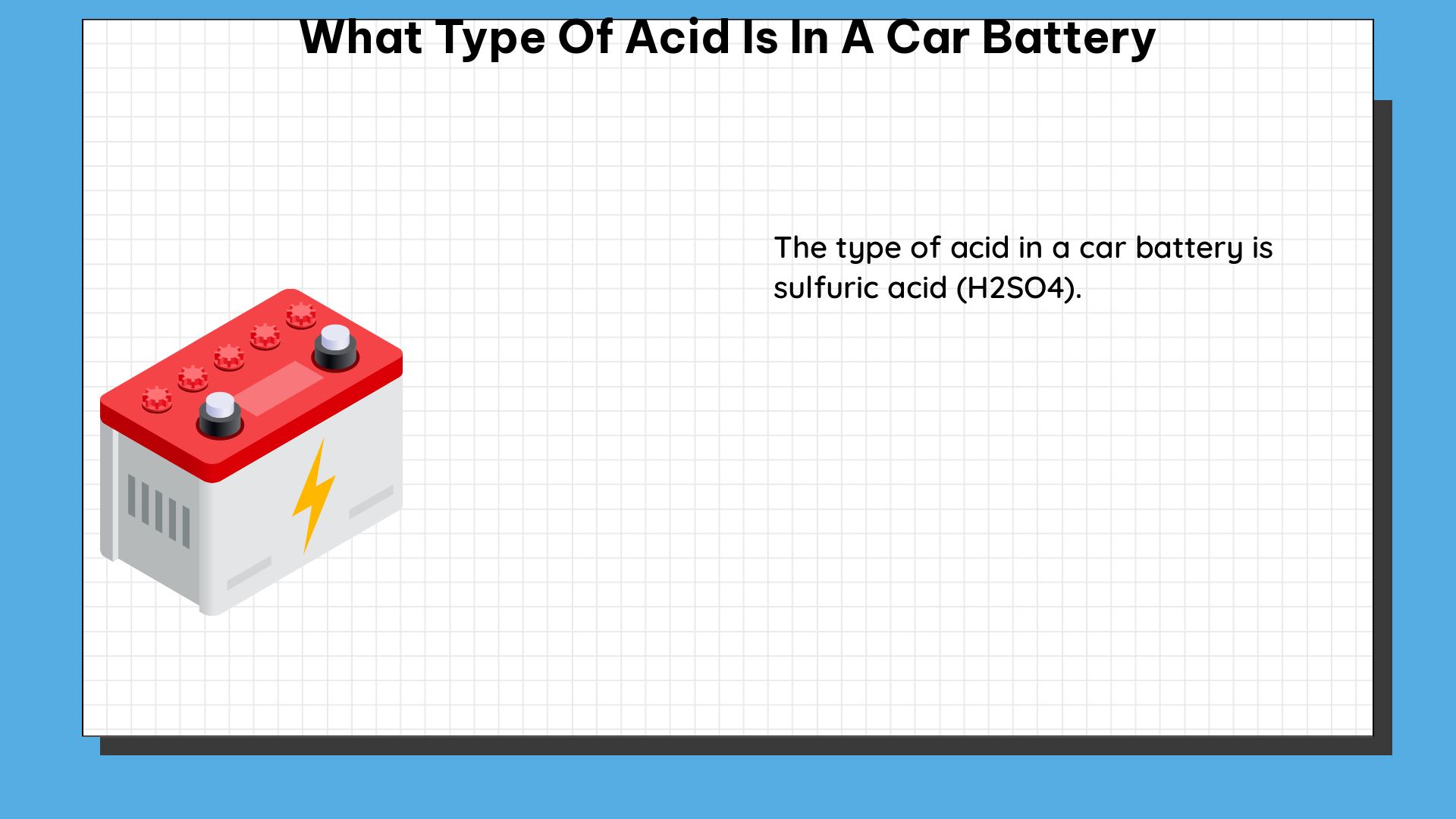The type of acid found in a car battery is sulfuric acid (H2SO4). More specifically, a car battery contains 30-50% of sulfuric acid in water, with a density of 1.25 kilograms per liter and a pH level of about 0.8. This acid is used as an electrolyte in the lead-acid battery, which is the most common type of car battery.
Understanding the Chemistry of Lead-Acid Car Batteries
The chemistry of a lead-acid car battery involves the use of lead dioxide and metallic lead as an anode and sulfuric acid as an electrolyte. When the battery is charged, the lead sulfate on the negative plates is converted back to lead, and the lead sulfate on the positive plates is converted back to lead dioxide.
The Sulfuric Acid Composition
The sulfuric acid used in car batteries is a highly concentrated solution, typically containing 30-50% sulfuric acid in water. This concentration is crucial for the battery’s performance, as it affects the density and conductivity of the electrolyte.
| Sulfuric Acid Concentration | Density (kg/L) | pH Level |
|---|---|---|
| 30% | 1.22 | 0.9 |
| 40% | 1.25 | 0.8 |
| 50% | 1.29 | 0.6 |
The density of the sulfuric acid solution is typically around 1.25 kg/L, which is higher than the density of water (1.0 kg/L). This increased density helps to maintain the necessary specific gravity of the electrolyte, which is crucial for the battery’s performance.
The Sulfation Process
If the battery is not fully charged, a process called sulfation can occur. Sulfation is the formation of large crystals of lead sulfate on the negative plates, reducing the battery’s active material and performance.
The sulfation process can be reversible or permanent, depending on the severity and duration of the low state-of-charge. Reversible sulfation can be minimized by applying an overcharge to an already fully charged battery in the form of a regulated current of about 200mA for 24 hours, allowing the battery temperature to rise to 50-60°C (122-140°F) during the service.
However, if the battery has been in a low state-of-charge for weeks or months, the sulfation may be permanent, and no form of restoration may be possible.
Preventing and Reversing Sulfation

While some companies offer anti-sulfation devices that apply pulses to the battery terminals to prevent and reverse sulfation, these methods are often unscientific and can harm the battery by promoting grid corrosion and creating soft shorts that may increase self-discharge.
The most effective way to prevent and reverse sulfation is through proper charging and maintenance of the battery. This includes:
- Regularly charging the battery to a full state-of-charge, either through driving or using a battery charger.
- Avoiding leaving the battery in a low state-of-charge for extended periods.
- Performing an equalization charge (a controlled overcharge) every few months to help remove any sulfation buildup.
- Ensuring the battery terminals are clean and free of corrosion.
- Replacing the battery if it has been severely sulfated and cannot be restored.
Conclusion
The type of acid found in a car battery is sulfuric acid (H2SO4), which is used as an electrolyte in the lead-acid battery. Understanding the composition, chemistry, and sulfation process of this acid is crucial for maintaining the health and performance of your car’s battery. By following proper charging and maintenance practices, you can minimize sulfation and prolong the life of your car’s battery.
References:
– How much CO2 is emitted in the manufacturing of batteries?
– What Kind of Acid is in a Battery?
– Sulfation and How to Prevent It

The lambdageeks.com Core SME Team is a group of experienced subject matter experts from diverse scientific and technical fields including Physics, Chemistry, Technology,Electronics & Electrical Engineering, Automotive, Mechanical Engineering. Our team collaborates to create high-quality, well-researched articles on a wide range of science and technology topics for the lambdageeks.com website.
All Our Senior SME are having more than 7 Years of experience in the respective fields . They are either Working Industry Professionals or assocaited With different Universities. Refer Our Authors Page to get to know About our Core SMEs.